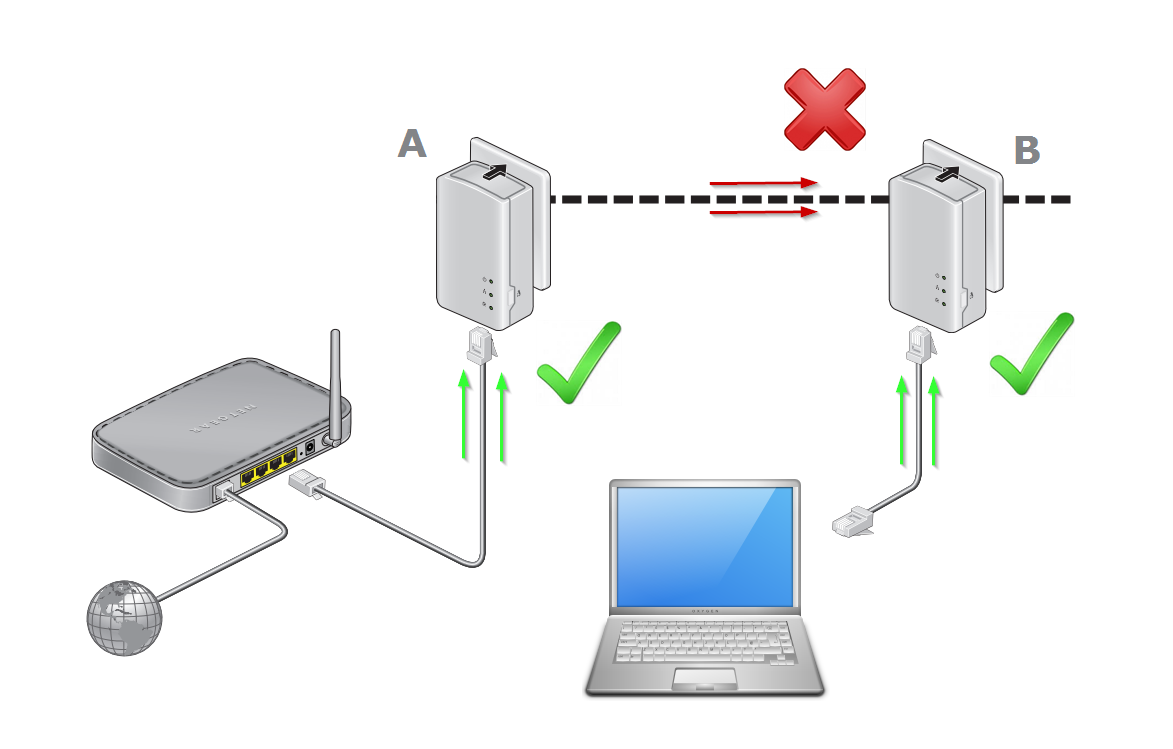In the world of closed-circuit television (CCTV) systems, the distance between cameras and recording devices plays a crucial role in determining the overall effectiveness of the surveillance setup. One of the most common types of cables used in CCTV installations is the Category 5 (Cat5) cable. This article will delve into the maximum distance limits for Cat5 cable runs in CCTV systems, exploring the challenges, solutions, and best practices for optimizing your surveillance network.
Understanding Cat5 Cable and Its Limitations
Cat5 cable is a twisted pair cable designed for computer networks and other applications that require high-speed data transmission. It’s widely used in CCTV systems due to its cost-effectiveness and versatility. However, like all cable types, Cat5 has its limitations, particularly when it comes to distance.
Standard Distance Limits
The industry-standard maximum length for a single run of Cat5 cable is 100 meters (328 feet). This limit applies to Cat5, Cat5e, Cat6, and Cat6a cables when used in standard Ethernet applications. This distance limitation is based on the IEEE 802.3 standards for 10BASE-T, 100BASE-TX, and 1000BASE-T Ethernet.
Factors Affecting Cable Performance
Several factors can impact the performance of Cat5 cables in CCTV applications:
- Signal Attenuation: As the signal travels along the cable, it naturally weakens over distance.
- Electromagnetic Interference (EMI): External electrical sources can interfere with the signal, especially over longer distances.
- Cable Quality: Higher quality cables with better shielding can maintain signal integrity over longer distances.
- Installation Practices: Proper installation techniques, such as avoiding sharp bends and maintaining separation from power cables, can help maximize cable performance.
CCTV Camera Types and Their Impact on Cable Distance
The type of CCTV camera you’re using can significantly affect the maximum cable run distance. Let’s explore the two main types of CCTV cameras and their distance requirements:
Analog CCTV Cameras
Analog cameras typically use coaxial cables for video transmission and separate power cables. When using Cat5 cables with analog cameras:
- Maximum Distance: With proper baluns (devices that convert between balanced and unbalanced signals), analog cameras can transmit video signals over Cat5 cables for distances up to 300 meters (984 feet).
- Power Considerations: Power is usually supplied separately, which may limit the overall distance based on voltage drop.
IP CCTV Cameras
IP cameras use network cables for both video transmission and power (when using Power over Ethernet or PoE):
- Maximum Distance: Standard Ethernet limitations apply, restricting Cat5 cable runs to 100 meters (328 feet).
- PoE Advantages: PoE simplifies installation by eliminating the need for separate power cables but may further limit distance due to power loss over longer runs.
Overcoming Distance Limitations in CCTV Systems
While the standard 100-meter limit for Cat5 cables can be restrictive for larger CCTV installations, several solutions exist to extend this range:
1. PoE Extenders and Repeaters
PoE extenders and repeaters can significantly increase the distance between IP cameras and network switches:
- Functionality: These devices amplify and retransmit both data and power signals.
- Distance Gain: Depending on the model, PoE extenders can add an additional 100 meters or more to your cable run.
- Cascading: Some extenders can be daisy-chained to cover even greater distances.
2. Ethernet Switches
Strategically placed Ethernet switches can effectively extend your network:
- Network Segmentation: Switches create separate network segments, each with its own 100-meter limit.
- Flexibility: This solution allows for more complex network topologies and can support multiple cameras.
- Power Considerations: Ensure switches are placed where power is available or use PoE switches for powering cameras.
3. Fiber Optic Converters
For extremely long distances, fiber optic technology offers a robust solution:
- Distance Capabilities: Fiber optic cables can transmit signals over several kilometers without degradation.
- Conversion Process: Media converters are used to change signals between Ethernet and fiber optic formats.
- Immunity to Interference: Fiber optics are not affected by electromagnetic interference, making them ideal for challenging environments.
4. Wireless Solutions
In scenarios where cabling is impractical, wireless technologies can bridge the gap:
- Point-to-Point Bridges: These can connect distant cameras to the main network.
- Mesh Networks: A network of wireless nodes can cover large areas without long cable runs.
- Considerations: Line of sight, bandwidth, and security must be carefully evaluated when implementing wireless solutions.
Best Practices for Maximizing Cat5 Cable Performance in CCTV
To get the most out of your Cat5 cable runs in CCTV applications, consider the following best practices:
- Use High-Quality Cables: Invest in well-constructed Cat5e or Cat6 cables with proper shielding.
- Proper Installation Techniques:
- Avoid sharp bends and kinks in the cable.
- Maintain separation from power cables to reduce interference.
- Use appropriate cable management tools to protect cables from physical damage.
- Regular Maintenance: Periodically inspect and test cable runs to ensure optimal performance.
- Consider Environmental Factors: Use outdoor-rated cables for external runs and consider temperature extremes in your cable selection.
- Plan for Future Expansion: Install additional conduits or cable pathways to accommodate future upgrades or additions to your CCTV system.
Advanced Techniques for Long-Distance CCTV Installations
For installations requiring coverage over vast areas or in challenging environments, consider these advanced techniques:
Hybrid Systems
Combining different technologies can provide the best of all worlds:
- Fiber Backbone with Cat5 Endpoints: Use fiber for long-distance backhaul and Cat5 for the final connection to cameras.
- Wireless-to-Wired Transitions: Employ wireless links to cover long distances and transition to Cat5 for local camera clusters.
Distributed Intelligence
Implementing edge computing can reduce the strain on long cable runs:
- Local Processing: Use cameras or local devices with onboard analytics to process video locally, sending only relevant data over the network.
- Reduced Bandwidth Requirements: This approach can allow for longer cable runs by reducing the amount of data transmitted.
Power Management Strategies
Efficient power distribution is crucial for long-distance CCTV installations:
- High-Power PoE: Utilize PoE++ (IEEE 802.3bt) for increased power delivery over longer distances.
- Local Power Injection: Use midspan PoE injectors to boost power for distant cameras.
Future-Proofing Your CCTV Cable Infrastructure
As technology evolves, so do the capabilities of CCTV systems. To ensure your installation remains viable for years to come:
- Opt for Higher Category Cables: While Cat5e may suffice for current needs, installing Cat6 or Cat6a can prepare your system for future high-bandwidth applications.
- Install Excess Capacity: Run additional cables or conduits during initial installation to accommodate future expansion or technology upgrades.
- Consider Software-Defined Networking (SDN): Implementing SDN can provide greater flexibility in managing and optimizing your network as it grows.
- Stay Informed on Emerging Standards: Keep abreast of developments in network technologies that may impact CCTV systems, such as new PoE standards or advanced compression techniques.
Conclusion
While the standard 100-meter limit for Cat5 cable runs presents a challenge for large-scale CCTV installations, numerous solutions and best practices can help overcome these limitations. By understanding the factors that affect cable performance, choosing the right technologies for your specific needs, and implementing proper installation and maintenance techniques, you can create a robust and scalable CCTV system that extends well beyond the traditional Cat5 distance limits.
As surveillance technology continues to advance, the integration of various cable types, wireless technologies, and intelligent systems will play an increasingly important role in designing effective CCTV networks. By staying informed about these developments and planning for future expansion, you can ensure that your CCTV infrastructure remains capable of meeting evolving security needs for years to come.
Remember, the key to a successful long-distance CCTV installation lies not just in overcoming the physical limitations of Cat5 cables, but in creating a holistic system that balances performance, reliability, and scalability. With careful planning and the right combination of technologies, even the most challenging surveillance requirements can be met effectively.







